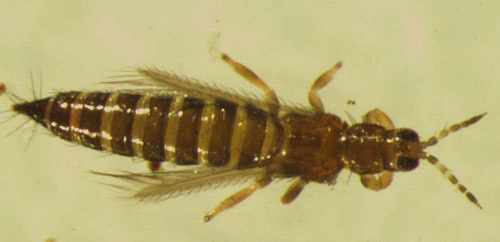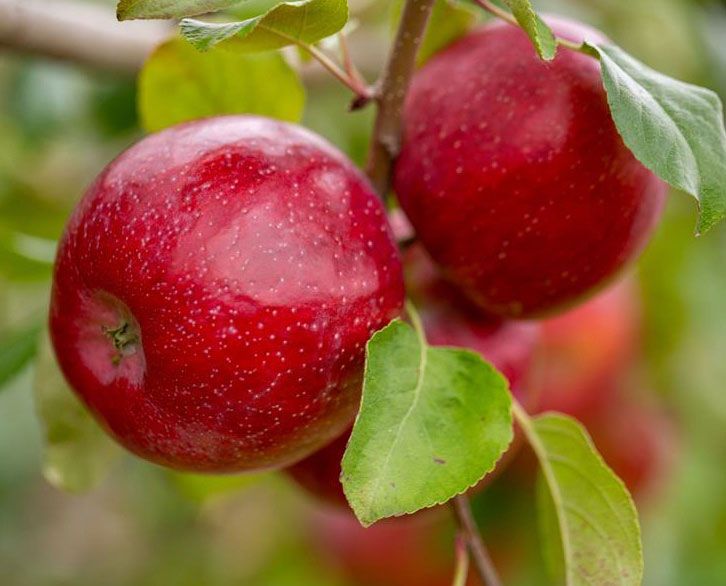Exceptional Care Needed When Taking On Common Blossom Thrips
Crops Affected
Common blossom thrips (Frankliniella schultzei Trybom) is a polyphagous pest, which feeds on various ornamental and edible crop hosts and has been recorded on vegetables such as beans, eggplant, okra, tomato, sweet potato, peppers, onion, and pigeon pea.

Photo by Vivek Kumar
Identification
The common blossom thrips is a relatively new vegetable pest in South Florida. It is a key pest in tomato and cucumber fields in South America.
The common blossom thrips has a very wide distribution and is mainly found in tropical and subtropical areas throughout the world.
F. schultzei manifest two different color morphs, a dark and a pale form. Adult females are 1.1 to 1.5 millimeters (mm) long, whereas adult males are 1 mm to 1.6 mm in length. Thrips species usually are identified by body color, body setae, and a comb on the eighth abdominal segment. Due to their small size and the microscopic nature of these distinguishing characteristics, identification is best left to experts.
F. schultzei can cause both direct and indirect damages to crops. Both adults and nymphs feed on pollen and floral tissue, leading to flower abortion. Severe infestations can cause discoloration and stunted growth of the plant.
In addition, to direct feeding damage, common blossom thrips is known to vector several tospoviruses including tomato spotted wilt virus (TSWV), groundnut ringspot virus (GRSV), and tomato chlorotic spot virus (TCSV).
A new incidence of TCSV on tomatoes has been recorded in Homestead and other South Florida locations. Its spread has been associated with F. schultzei and western flower thrips (F. occidentalis).
Survival And Spread
There are two larval instars and two inactive and non-feeding stages in the life cycle. The latter two stages are known as prepupa and pupa.
Females insert their eggs in flower tissue. Under warm conditions, a complete generation takes around 12.6 days. The adults live approximately 13 days.
Management Methods
Common flower thrips is frequently found feeding on the flowers of its host plant. Like other thrips, F. schultzei can be sampled using colored sticky traps.
A number of insecticides from Dow AgroSciences are labeled for thrips control in vegetables. Radiant (spinetoram), Entrust (spinosad), and Spintor (spinosad) are efficacious against thrips while sparing predator populations. Be sure to rotate active ingredients to avoid the buildup potential resistance to these materials.
Research in North Florida with TSWV has indicated insecticides alone may not be adequate to control thrips-vectored tospoviruses.
Growers should consider an integrated pest management approach combining resistant varieties, scouting, rouging infected plants, UV-reflective mulches, SAR elicitors such as acibenzolar-S-methyl (Actigard, Syngenta), and biorational insecticide programs to manage GRSV and TCSV.
Use of predatory mites, such as Amblyseius swirskii Athias-Henriot, as a potential biocontrol agent for the control of F. schultzei populations is currently under investigation.










